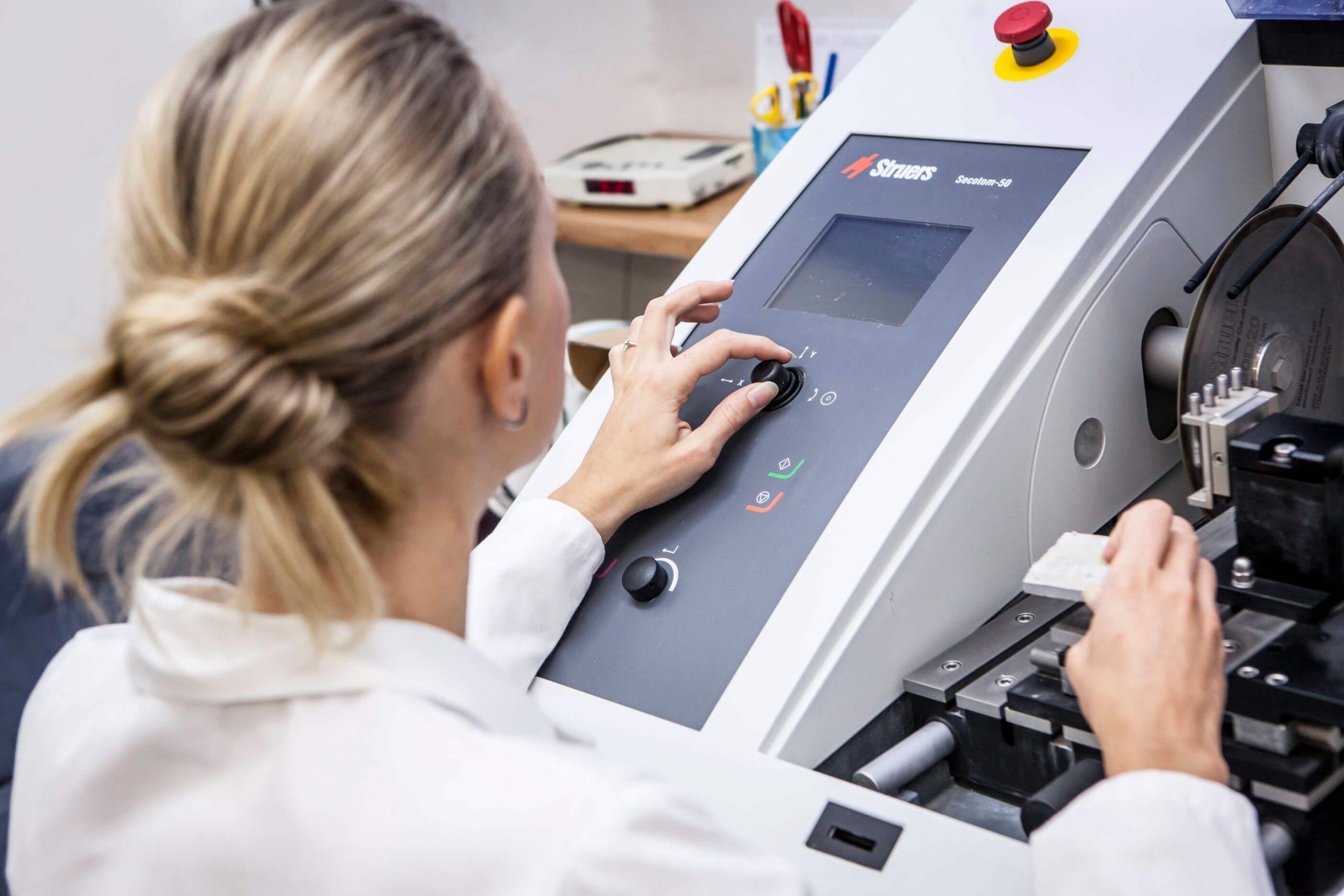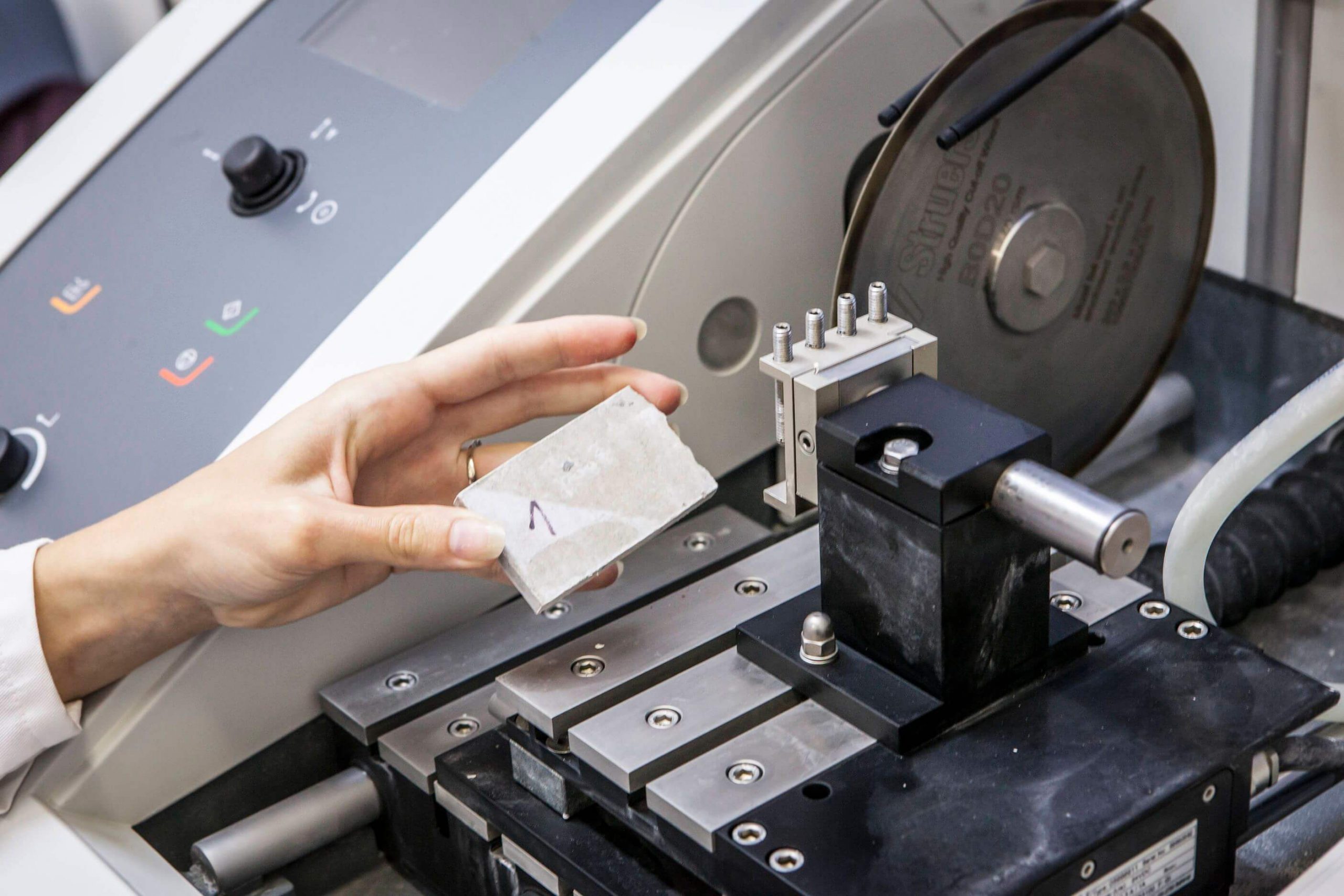Chemical-Physical Laboratory Centre
The Chemical-Physical Laboratory Centre is the latest addition to the family of laboratories and testing rooms at the Klokner Institute of the Czech Technical University. Its aim is to develop new materials, technologies and methods for achieving long-term sustainability of construction production, diagnose the behavior of modern and historical materials and structures during climate changes, and evaluate the overall condition of buildings.
Objectives of the Chemical-Physical Laboratory Centre
The Chemical-Physical Laboratory Centre focuses on the research of silicate materials used in the construction industry. The project combines the theoretical knowledge of physics and chemistry of the experts from the Klokner Institute of the Czech Technical University with experimental activity which is ensured by the instruments and technical equipment of the laboratory enabling the analysis of chemical-physical properties, interactions and functions of silicate materials.
The research methods of the Chemical-Physical Laboratory Centre are based on the following equipment:
Particle size analyser
The particle size analyser makes it possible to determine the size of particles and their distribution in suspensions, emulsions and dry powders using a laser measuring system. Depending on the configuration, it can be used not only as a particle size analyser but also to measure zeta potential, molecular weight and/or viral coefficient.
Vibrating disc mill
The vibrating disc mill is suitable for extremely fast grinding without loss of sample weight and for reproducible grinding of medium-hard, brittle and fibrous materials of larger volume. Due to the final fineness, it enables the preparation of samples for spectral analysis. The mill can be used, for example, on concrete, aggregates, ceramics, ores, silicates, glass, clinker, slag, coal, coke, corundum, soils, minerals, metal oxides, or on electronic components.
Pearl melting apparatus for X-ray fluorescence spectrometer
The instrument enables the preparation of highly homogeneous samples for X-ray fluorescence (XRF) analysis. A sample is heated (melted) with a mixture of sodium or lithium borates. The melt is then cast into a preheated platinum dish (to form a pearl for XRF) or poured into diluted HCl (for spectrometry). A high-quality homogeneous sample is the most important parameter of all reproducible measurements to achieve sufficiently accurate results.
Precision saw
A high-end, multi-purpose and precise grinding device that combines the latest technologies of precision division with high accuracy and user comfort. The saw enables precise cutting of the following materials: metal, ceramics, composites, cemented carbides, electronic components, glass, bio-materials, minerals, etc., without the risk of sample deformation.
Thermal analyser
This instrument enables thermal analysis of silicates, metals, plastics and composites. It is used to identify mineralogical phases and to monitor reaction kinetics. Thermal analysis measures the physical and chemical properties of materials (solids, rocks, minerals).
Optical emission spectrometer with inductively coupled plasma
An analytical method used to determine the content of trace and significant concentrations of elements in the analyzed liquid sample. The instrument enables the analysis of a very wide range of samples – aqueous solutions, silicate matrices, suspensions, saline solutions, waste water or leachates from waste. The instrument also enables a simpler performance of silicate analysis, one of the essential chemical analyses in the field of building materials, mainly mortars and concrete when it is necessary to distinguish the binder (cement, lime, fly ash, etc.) and the filler (aggregate).
The construction of the Chemical-Physical Centre was supported by the European Fund for International Development (EPDF).


